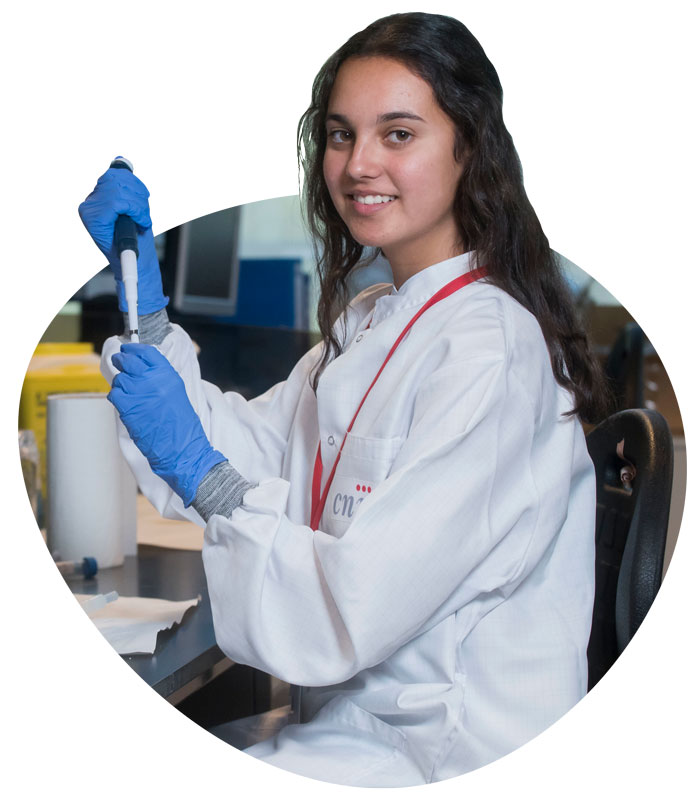
In Spain, CVD are responsible for 35% of all deaths among men and 43% among women. Although the latest medical advances have increased patient survival, paradoxically this success has increased the number of people living with cardiovascular health problems and long-term disabilities, leading to an increased work absenteeism and other personal burdens, in addition to a significant increase in medical care related costs.
A better understanding of the conditions that lead to cardiovascular health will help to improve primary prevention strategies. Likewise, it will serve to alleviate the enormous social and personal burden associated with atherosclerosis, a pathology responsible for the majority of CVD deaths.
In 2010, the CNIC-Santander PESA Study (Progression of Early Subclinical Atherosclerosis) began a pioneering project in the use of non-invasive imaging techniques to improve CVD risk estimation before symptoms appear. During these years, PESA has established itself as one of the largest studies with international impact aimed at improving the diagnosis and prevention of CVD in healthy people between 40 and 54 years old, an age range in which the disease has not normally been manifested yet. This makes PESA different from other large imaging studies, which generally analyze people over 60 years old once the disease has progressed for many years and has already caused irreversible damage.
Even though other population studies of cardiovascular risk already exist, PESA represents the paradigm in the use of advanced imaging technologies for the identification of pre-symptomatic lesions in different vascular territories and for the correlation of these imaging data with biochemical, metabolomic, proteomic, genetic and lifestyle indicators.
In addition, this is the only study in the world that simultaneously explores multiple different vascular territories (both carotid arteries, coronary arteries, abdominal aorta, and both iliofemoral arteries), including not only plaque quantification, but also plaque volume and characterization, as well as state-of-the-art techniques for the analysis of biological samples.
These findings are changing our understanding of how atherosclerosis initiates and develops and how risk should be assessed, identifying extensive lesions in previously unexplored vascular territories that point to important changes in CVD risk assessment strategies in the future.
Over these years, the project has become a world reference in cardiovascular research. PESA’s findings help to understand atherosclerosis from its earliest stages of formation. Some examples related to risk factors are the discovery that a more effective lowering of LDL-C is necessary, even in those people considered to be at optimal risk, than a low ‘energy’ breakfast (<5% of daily calories) doubles the risk of atherosclerotic lesions, or that sleeping less than six hours a day increases our cardiovascular risk.
Likewise, the study has found important findings for the early detection of the disease with 3D ultrasound, the relationship between inflammation of the arteries and the subsequent appearance of plaque, or the effectiveness of risk calculation with only five health indicators (blood pressure, physical activity, body mass index, fruit and vegetable consumption, and tobacco consumption) with the Fuster-BEWAT index. In addition, an algorithm that personalizes cardiovascular risk in healthy people has been also generated.
In the PESA-H study, arteriosclerosis would develop and progress at a higher rate compared to the PESA study in relation to the aging of the population, the greater burden of classic risk factors and other factors described in the PESA itself, the arterial inflammation and other environmental and biological aspects yet to be discovered. This greater burden and progression of arteriosclerosis would be associated with higher rates of cardiovascular events.
To do this, we will continue monitoring PESA participants who renew their consent to participate in PESA-H and expand it to new innovative research areas, such as:
To validate the association between acquired somatic mutations in circulating blood cells and the presence and progression of SA, as well as to study the association between the shortening of the telomere length of circulating leukocytes and the progression of SA.
To study the interactions between SA, behaviour and brain function, as well as the relationship between SA and Alzheimer’s disease.
To integrate the “big data” generated in this study using state-of-the-art artificial intelligence systems, and to develop new technological tools and specific interventions to promote health in the Banco Santander Community, following the P4 medical principles (Personalized, Predictive, Preventive and Participatory).
PESA-CNIC-Santander is already an internationally successful study. However, the results obtained so far are only the tip of the iceberg of what can be achieved if we follow this population to the ages at which cardiovascular events occur. This PESA study population, added to the research infrastructure already in house, represents a truly unique opportunity to delve into the determinants of health and CVD. In this proposed second stage, PESA is ready to position itself, and even surpass, other emblematic studies such as the American “Framingham Heart Study“, placing PESA-HEALTH as a key study in the international scene.
The PESA-HEALTH Initiative arises as the natural and necessary development of the previous PESA-CNIC-Santander longitudinal study started in 2010. Directed by Professor Valentín Fuster, and within the Santander-CNIC Joint Venture, this project will last 10 more years.
Following the same population for a long period of time is the only way to translate the information we currently have (highly suggestive and novel correlations) to the information we need (firmly established links between pre-symptomatic atherosclerosis and later events), which will be obtained as the study population advances in age, and that will allow us to estimate the individual risk with greater precision and, therefore, to improve primary prevention. Monitored events will include: myocardial infarction, stroke, deaths due to cardiovascular causes, and coronary revascularization procedures and vascular surgery.
In addition, the quantification and characterization of atherosclerotic plaques in multiple territories and the correlation of the results of the images with the latest generation techniques for the analysis of biological samples will continue.